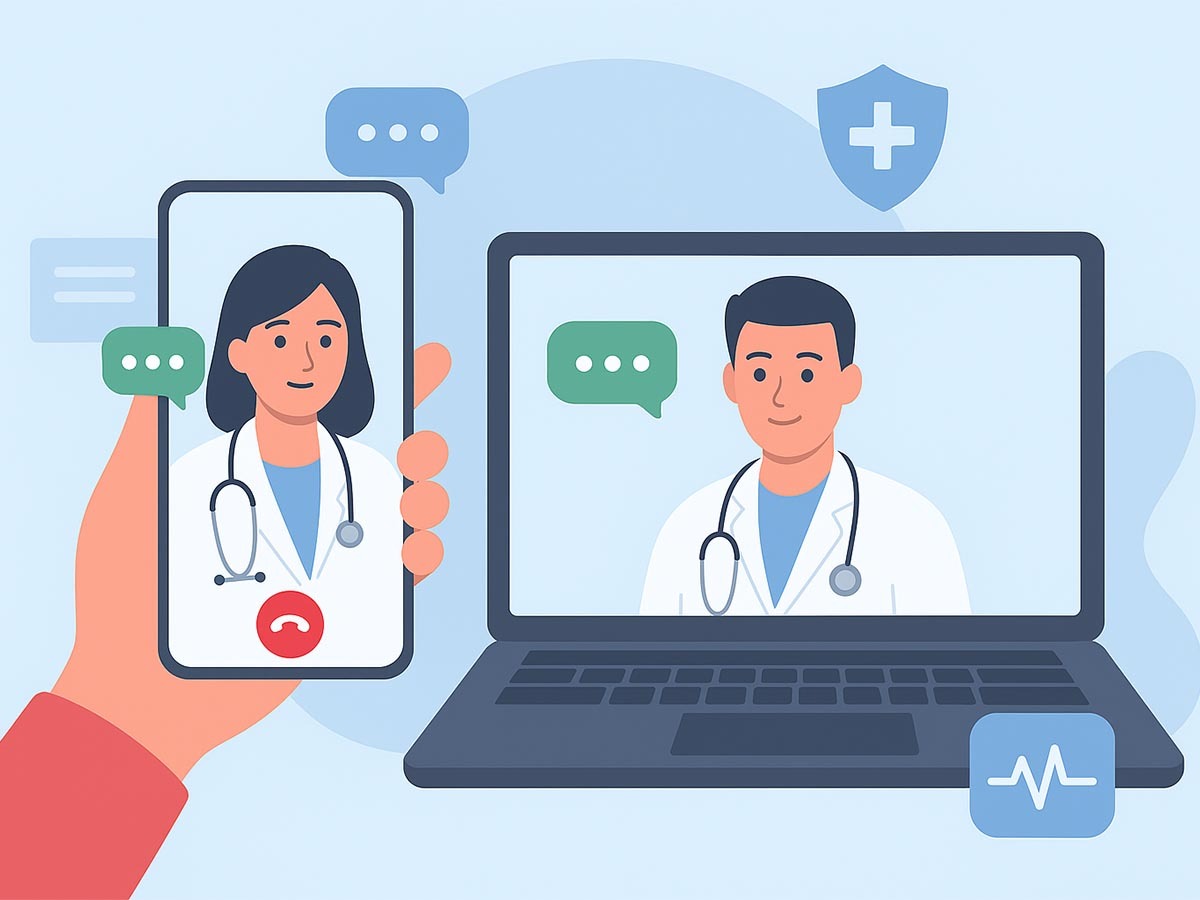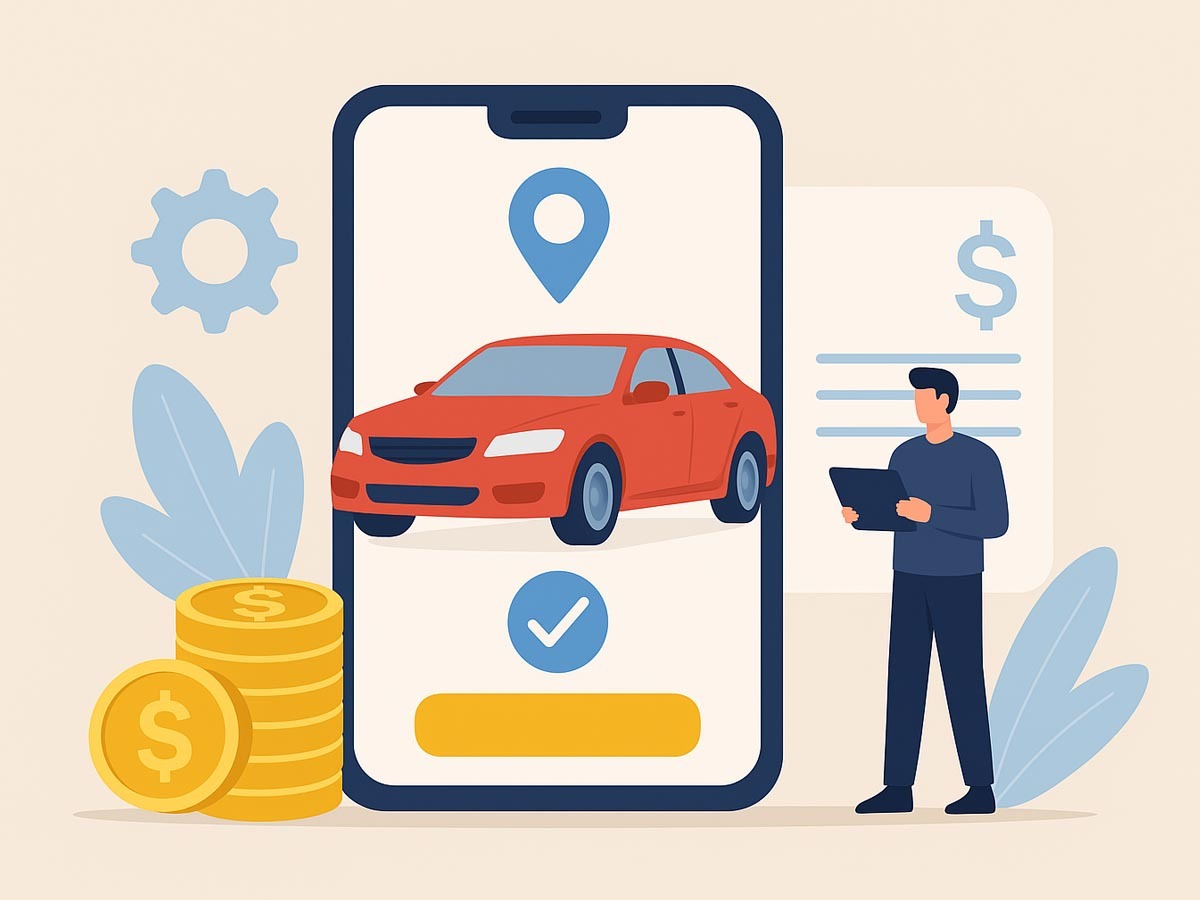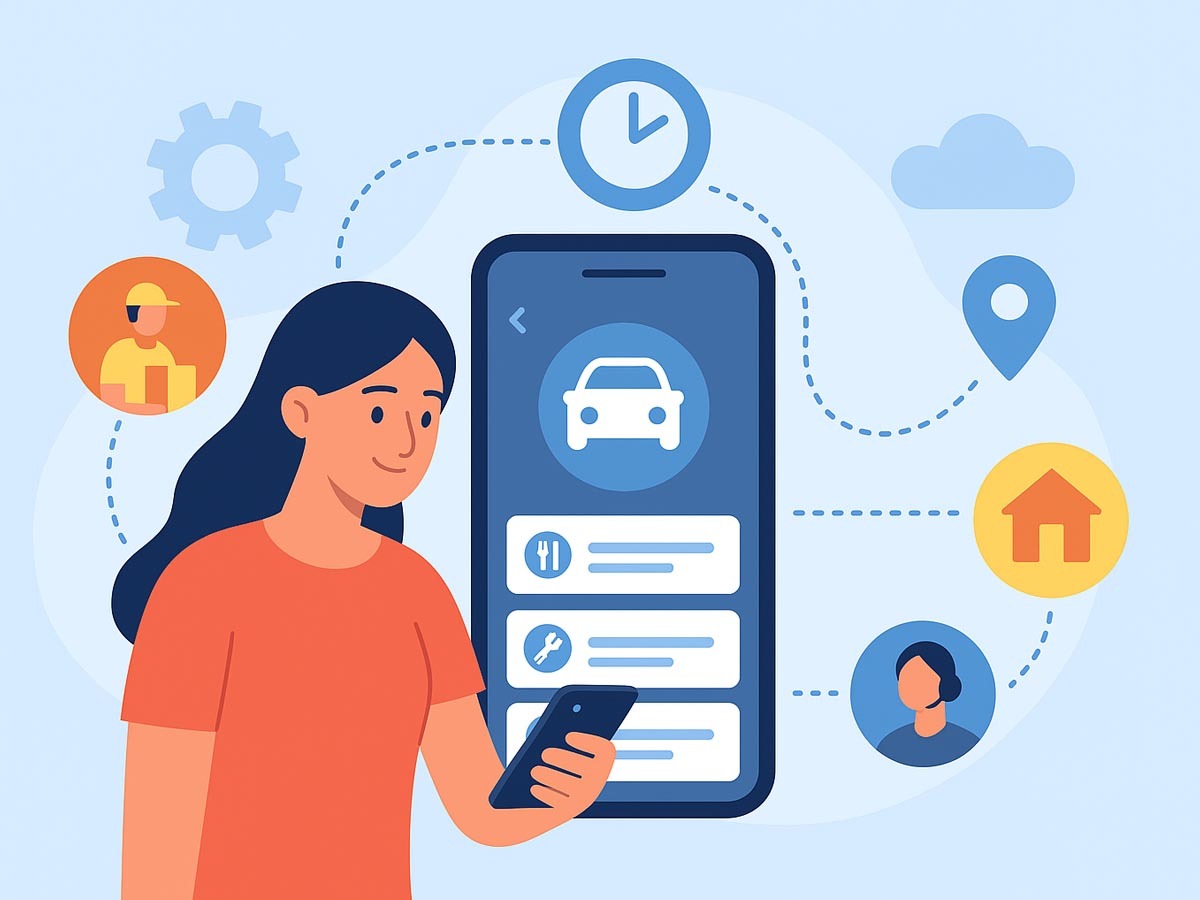How Much Does It Cost to Build an App Like Teladoc?

-
Ankit Patel
- October 28, 2025
- 6 min read
The world of healthcare is changing faster than ever. Patients no longer want to wait in long lines or travel miles just to meet a doctor. They want quick, remote access to trusted healthcare services — and that’s exactly what Teladoc offers.
Apps like Teladoc have made it possible to consult doctors from the comfort of your home with just a few taps. This rise in telemedicine has inspired many startups and healthcare providers to develop an app like Teladoc.
But the biggest question is — how much does it cost to build an app like Teladoc?
Let’s break it all down step by step — from features and tech stack to cost factors, compliance, and more.
◉ The Rise of Telehealth Apps
The global telehealth and telemedicine market has exploded over the past few years. From $123.26 billion in 2024, it’s projected to surpass $455.27 billion by 2030.
This growth is driven by convenience, rising digital adoption, and the push for remote healthcare solutions after the pandemic. Now, hospitals, clinics, and entrepreneurs are all exploring telehealth app development to reach patients anywhere, anytime.
If you’re planning to enter this space, you’re stepping into one of the most promising sectors in healthcare technology.
◉ What Is the Teladoc App?
Teladoc is one of the world’s leading telehealth platforms that connects patients with licensed doctors through virtual consultations. It allows users to book appointments, talk to doctors via video or phone, and even get prescriptions — all without visiting a clinic.
Teladoc’s strength lies in its convenience and accessibility. Whether it’s general care, mental health, dermatology, or chronic condition management, Teladoc gives patients 24/7 access to medical professionals from anywhere.
Its success has inspired many startups and healthcare providers to build similar solutions — combining technology, privacy, and healthcare expertise into one easy-to-use app.
◉ Why Build a Telehealth App Like Teladoc?
Teladoc isn’t just an app; it’s a full ecosystem for virtual healthcare. It allows users to:
- Book appointments instantly
- Get online consultations with certified doctors
- Access prescriptions and reports digitally
- Manage medical records securely
Building a Telehealth app like Teladoc means offering a similar digital bridge between doctors and patients — safe, fast, and reliable. It also opens new revenue streams through subscriptions, per-visit charges, and partnerships with hospitals.
◉ Must-Have Features for a Successful Telehealth App
To understand the telemedicine app development cost, you must first understand what features go into it.
For Patients:
- Easy registration and profile creation
- Search and filter for doctors
- Appointment booking & scheduling
- Video or voice consultations
- Payment gateway
- Digital prescriptions & medical history
For Doctors:
- Doctor profile and verification
- Calendar management
- E-prescription
- Access to patient records
- Secure chat or video feature
For Admins:
- User management
- Doctor management
- Analytics dashboard
- Payment tracking
- Support & feedback management
◉ Advanced Features That Elevate Your Telehealth App
Modern healthcare apps aren’t just about calling a doctor. They also need:
- AI-based symptom checker
- EHR/EMR integration
- Cloud data storage
- Wearable or IoT device support
- Push notifications
- In-app chat and file sharing
- Multi-language support
Every extra feature increases complexity, which in turn affects the total telehealth app development cost.

◉ Security and Compliance – The Heart of Telehealth
When dealing with health data, security is everything. Your app must comply with regulations like HIPAA in the U.S. or GDPR in Europe.
A HIPAA-compliant healthcare app ensures that patient data is encrypted, stored safely, and shared only with authorized professionals.
Ignoring compliance can lead to legal penalties — and loss of user trust. So, while it may add cost, it’s absolutely non-negotiable.
◉ Factors That Affect the Cost of Building an App Like Teladoc
There’s no single price tag when it comes to creating a telehealth app. The total cost depends on several moving parts — features, design, team, and more. Let’s break them down in simple terms.
1. Features You Want to Include
Think of features as building blocks.
The more blocks you add, the higher the cost.
Suppose you’re looking for a basic online doctor consultation app with a simple login, video calls, and prescription capabilities. In that case, you’ll spend much less than an advanced app with things like AI health tracking, wearable integration, or multilingual support.
Start small. Add advanced features later once your app starts getting users.
2. User Experience & Design
Design plays a big role in healthcare apps.
People of all ages will use your app — so it needs to be simple, clear, and easy to navigate.
A neat, friendly interface costs a bit more to design but pays off in the long run. Good design keeps users coming back and helps you stand out in a crowded market.
3. Which Platforms You Build For
Are you targeting Android? iOS? Or both?
If you want to reach the widest audience, you’ll probably need both, which adds to your development cost.
If budget is a concern, building with a cross-platform framework such as Flutter or React Native can be a smart way to cut costs and speed up development.
4. Development Team Location
Where your development team is based can significantly impact your overall budget.
In countries like the United States or Europe, developer rates typically range from $100–$200 per hour.
In contrast, countries in Asia(especially India) offer skilled developers at around $25–$50 per hour.
That’s why many startups choose to outsource app development to India. It’s a smart way to save substantially without compromising on quality or expertise.
5. Data Privacy & Compliance
This part is non-negotiable.
Your app must be 100% secure and compliant with healthcare laws like HIPAA (in the U.S.) or GDPR (in Europe).
A HIPAA-compliant healthcare app requires encryption, secure logins, and data protection, which can raise the cost.
But trust me, it’s worth it. Users won’t use your app if they can’t trust it.
6. Maintenance & Future Updates
Even after the app launch, the work continues.
You’ll need regular updates, server monitoring, bug fixes, and maybe new features based on user feedback.
Plan around 10–15% of your annual budget for maintenance. That keeps your app secure and running smoothly.
Read also: Cost Estimation For Doctor Appointment Booking App Like ZocDoc
◉ How Much Does it Cost to Build an App Like Teladoc
Let’s be honest — there’s no one-size-fits-all price tag for a Telehealth app like Teladoc.
Your total investment depends on how ambitious your project is.
If you just want a simple version — something that connects patients and doctors for basic video calls — it would cost you around $30,000 to $50,000.
But if you’re aiming for something closer to Teladoc’s level, with features like AI assistance, analytics, and advanced security, expect to spend $100,000 to $200,000 or even more.
Yes, that sounds like a big number. But think about what you’re building — a secure digital clinic that people trust with their health. That level of quality, reliability, and privacy doesn’t come cheap.
If you plan smart, start small, and grow step by step, you can spread that cost over time. That’s exactly how most successful Telemedicine app development projects scale up.

◉ Tech Stack to Develop Telehealth App
Selecting the right tech stack is one of the most important steps in Telehealth app development. The right combination of technologies ensures your app is fast, secure, scalable, and compliant with healthcare regulations.
Here’s a suggested tech stack to build a Telehealth app like Teladoc:
- For Android: Kotlin or Java
- For iOS: Swift
- For Frontend: React, Angular, Java, HTML, CSS
- For Backend: Node.js, Express.js, Python (Django or Flask)
- For Database: MongoDB, HBase, PostgreSQL, or MySQL
- For Server & Hosting: AWS, Google Cloud, or Microsoft Azure
- Payment Processing: PayPal, Stripe, Braintree, or E-wallet integrations
- Push Notifications & In-App Messaging: Twilio, Firebase Cloud Messaging, Push.io
- Video Calling & Communication: WebRTC, Agora, or Vonage
- Authentication & Security: OAuth 2.0, JWT, SSL/TLS encryption
- Compliance: HIPAA, GDPR, SOC 2
- Analytics & Monitoring: Firebase Analytics, Mixpanel, Datadog, or New Relic
- DevOps & Deployment: Docker, Kubernetes, Jenkins, GitHub Actions
By combining these monetization strategies thoughtfully, telemedicine apps can create a sustainable business model while improving patient access and delivering quality healthcare.
Read also: Doctor On-Demand: How AI Is Transforming Virtual Healthcare
◉ How to Keep Costs Under Control
Building a telehealth app can become expensive if not planned strategically. Here are a few proven ways to save money without sacrificing quality:
- Start with an MVP: Launch only the essential features first to test the market and gather feedback.
- Use pre-built tools and APIs: Ready-made integrations for video calls, chat, or payments can save significant development time.
- Hire experienced offshore teams: Skilled developers from regions like India can deliver top-quality work at a lower cost.
- Automate testing: Automated QA helps detect bugs faster and reduces manual testing efforts.
- Go cloud-first: Platforms like AWS or Google Cloud offer easy scalability and lower upfront infrastructure costs.
By following these strategies, you can launch faster, spend smarter, and maintain high quality throughout your project.
◉ The Future of Telehealth Apps
The telehealth industry is evolving faster than ever — and it’s not slowing down anytime soon. With advancements in AI, wearable technology, and high-speed internet, virtual healthcare is becoming smarter, more personalized, and more accessible each year.
Here are some exciting trends shaping the future of telehealth apps:
- AI-driven symptom analysis
- Integration with smartwatches and other wearables
- Voice-enabled doctor consultations
- Real-time remote health monitoring
If you invest in healthcare software today, you’ll be part of the innovation transforming how the world experiences healthcare.
◉ Wrapping up
Building an app like Teladoc goes far beyond coding — it’s about bridging the gap between technology and human care. With the right mix of features, compliance, and user experience, a telehealth app can redefine how patients and doctors connect. The real success lies in creating a platform that’s secure, seamless, and genuinely useful — one that doesn’t just follow trends in digital healthcare but helps shape the future of it.
At the end of the day, this isn’t just about software — it’s about giving people easier access to better health. And that’s a mission worth building for.
You may also like

How Much Does It Cost to Build a Logistics App Like Aramex?
-
Ankit Patel
The logistics and transportation industry in the Middle East—particularly in the UAE and Saudi Arabia—is undergoing a massive digital transformation. From small courier services to full-scale regional delivery networks, companies are adopting technology to streamline operations, increase efficiency, and deliver superior customer experiences. The transportation business today demands real-time visibility, digital payments, and smart route… Read More

How Much Does It Cost to Build a Car Rental App Like Turo?
-
Ankit Patel
The car rental market has changed rapidly over the past few years. What used to be a traditional service dominated by large rental companies has now shifted toward digital, convenient, and highly accessible on-demand solutions. Today, platforms like Turo have opened the doors for peer-to-peer rentals, giving users the freedom to book cars anytime, anywhere…. Read More

How Multi-Agent AI Systems Are Powering On-Demand Apps
-
Ankit Patel
One AI agent can answer a question. But can it handle the chaos of real-time demand, delivery delays, balance supply, and customer feedback—all happening at once? That’s the challenge behind most on-demand apps today. A single model can automate a process, but it often can’t reason across multiple workflows or adapt to fast-changing conditions. As… Read More






